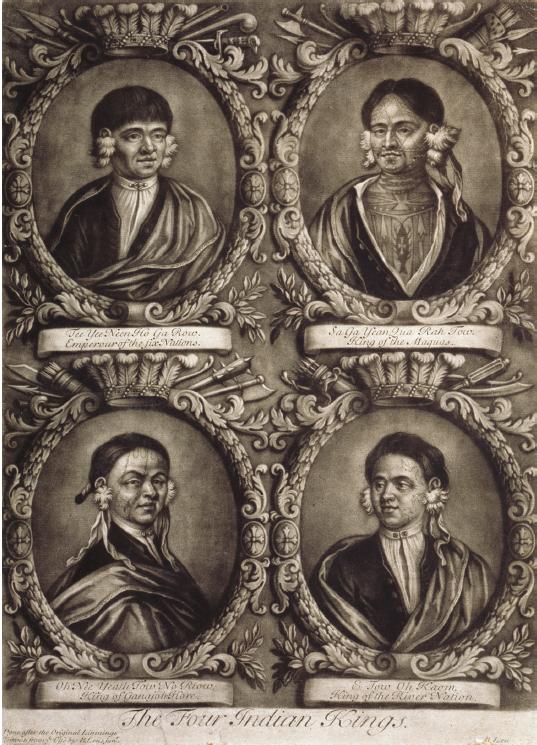Tribalization

For Native Americans, the rise of war intersected with a process scholars have called tribalization: the adaptation of stateless peoples to the demands imposed on them by neighboring states. In North America, tribalization occurred in catastrophic circumstances. Eurasian diseases rapidly killed off broad swaths of native communities, disproportionately victimizing the old and the very young. In oral cultures, old people were irreplaceable repositories of knowledge, while the young were quite literally the future. With populations in free fall, many polities disappeared altogether. By the eighteenth century, the groups that survived had all been transformed. Many were polyglot peoples: Some new tribes, like the Catawbas, had not existed before and were pieced together from remnants of formerly large groups. Other nations, like the Iroquois, declined in numbers but sustained themselves by adopting many war captives. In the Carolina borderlands, a large number of Muskogean-speaking communities came together as a nation known to the British as the “Creek” Indians, so named because some of them lived on Ochese Creek. Similarly, the Cherokees, the Delawares, and other groups that were culturally linked but politically fragmented became coherent “tribes” to deal more effectively with their European neighbors.
The rise of imperial warfare exposed Native American communities to danger, but it also gave them newfound leverage. The Iroquois were radically endangered by imperial conflict: a promised English alliance failed them, and in 1693 a combined force of French soldiers, militiamen, and their Indian allies burned all three Mohawk villages to the ground. Thereafter, the Iroquois devised a strategy for playing French and English interests off against each other. In 1701, they made alliances with both empires, declaring their intention to remain neutral in future conflicts between them. This did not mean that the Iroquois stayed on the sideline: Iroquois warriors often participated in raids during wartime, and Iroquois spokesmen met regularly with representatives of New York and New France to affirm their alliances and receive diplomatic gifts that included guns, powder, lead, clothing, and rum (from the British) or brandy (from the French). Their neutrality, paradoxically, made them more sought after as allies. For example, their alliance with New York, known as the Covenant Chain, soon became a model for relations between the British Empire and other Native American peoples.
Imperial warfare also reshaped Indian relations in the Southeast. During the War of the Spanish Succession (1702–1713), which pitted Britain against France and Spain, English settlers in the Carolinas armed the Creeks, whose 15,000 members farmed the fertile lands along the present-day border of Georgia and Alabama. A joint English-Creek expedition attacked Spanish Florida, burning the town of St. Augustine but failing to capture the fort. To protect Havana in nearby Cuba, the Spanish reinforced St. Augustine and unsuccessfully attacked Charleston, South Carolina.